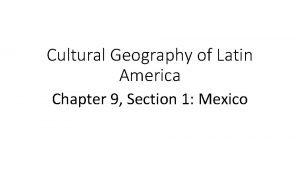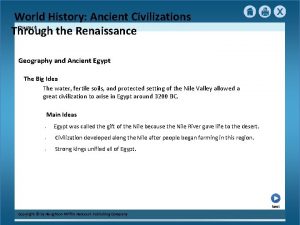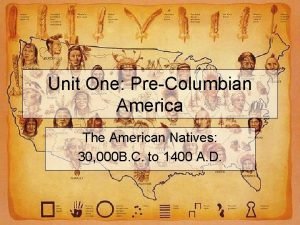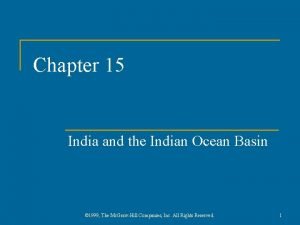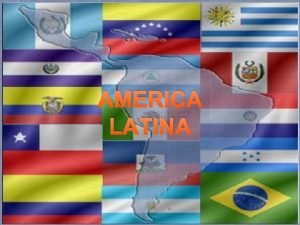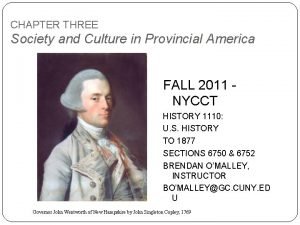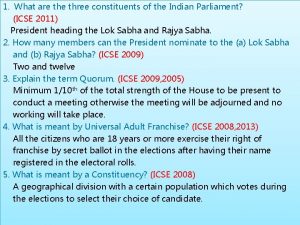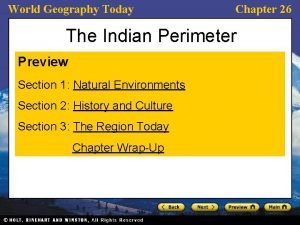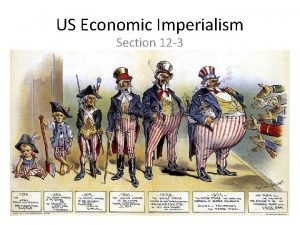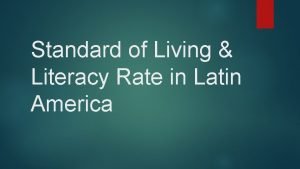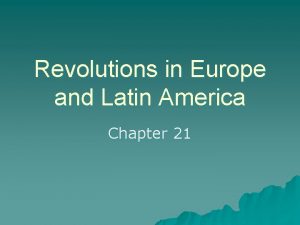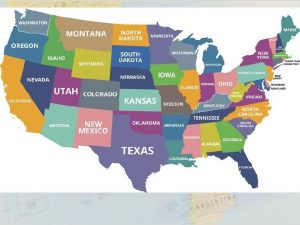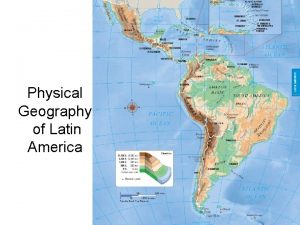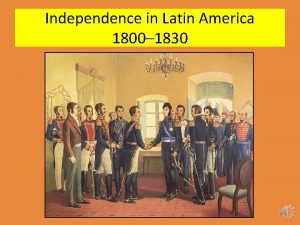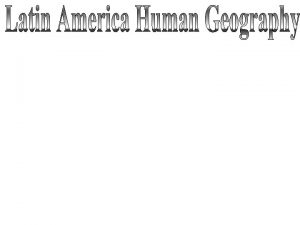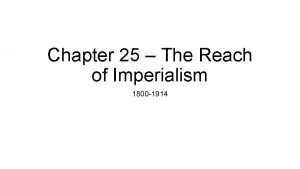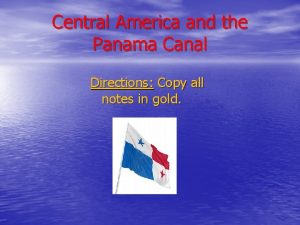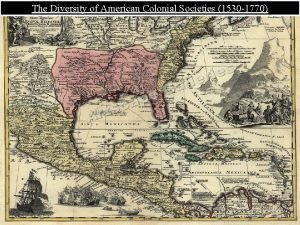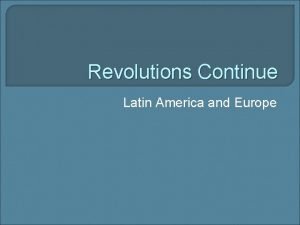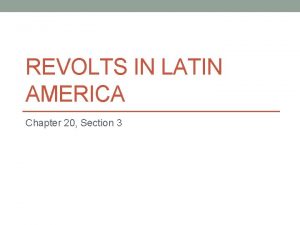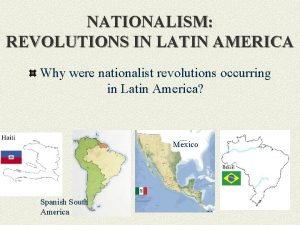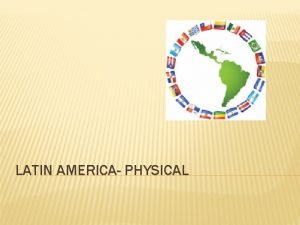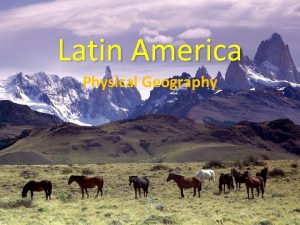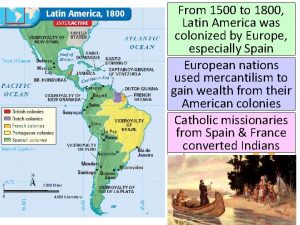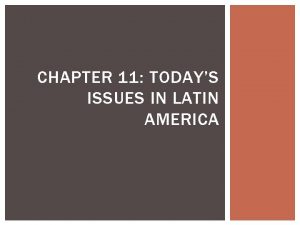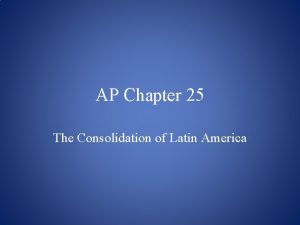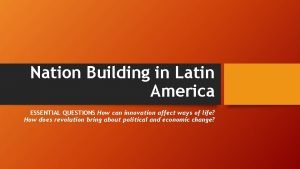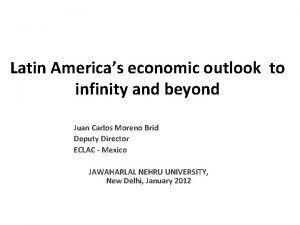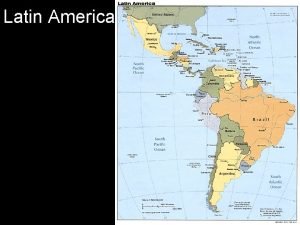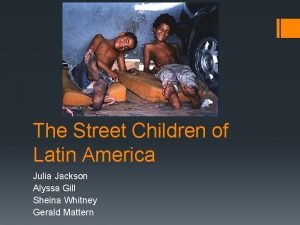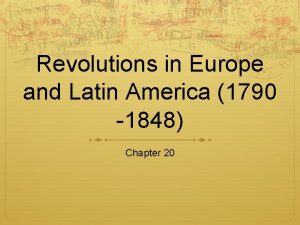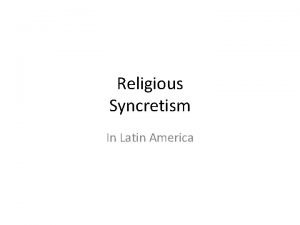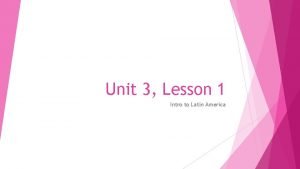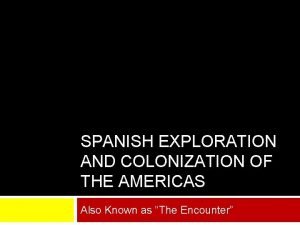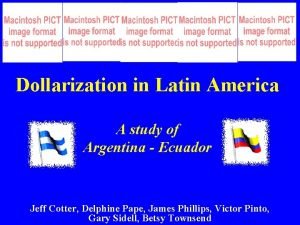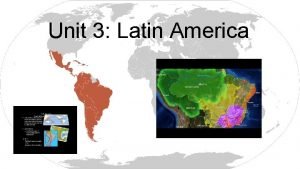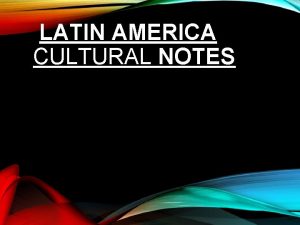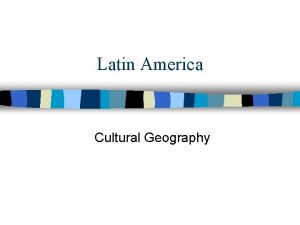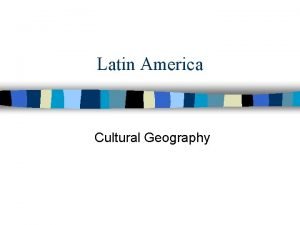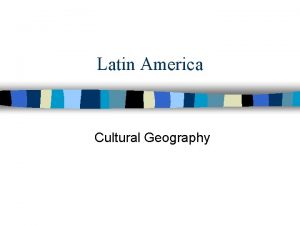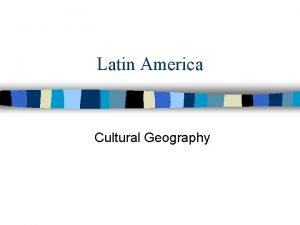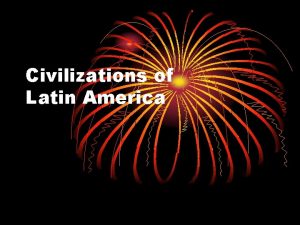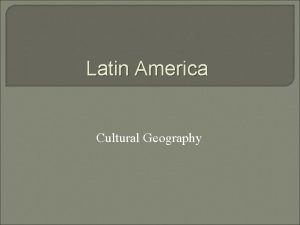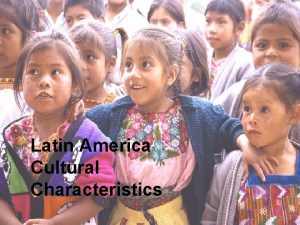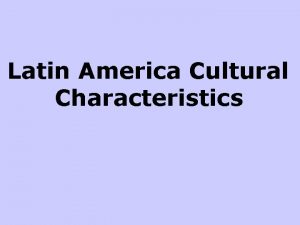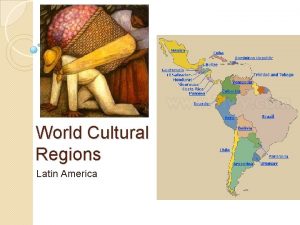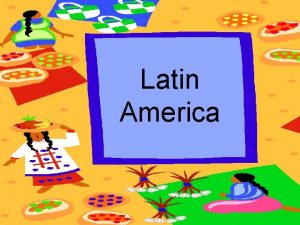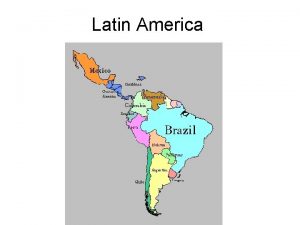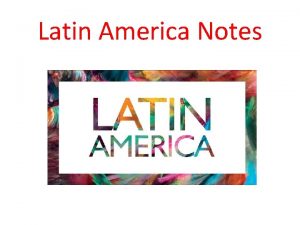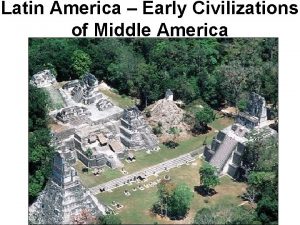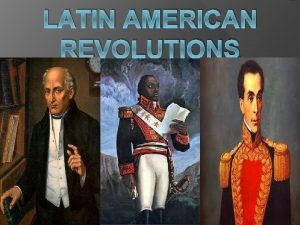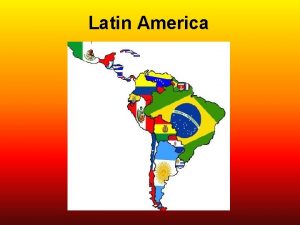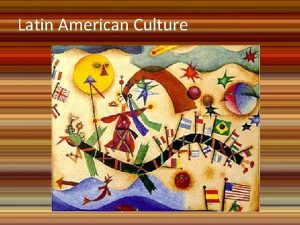LATIN AMERICA CULTURAL NOTES HISTORY INDIAN CIVILIZATIONS Three



























































- Slides: 59

LATIN AMERICA CULTURAL NOTES

HISTORY


INDIAN CIVILIZATIONS • Three important native civilizations that began in Latin America were: A. Maya B. Aztec C. Inca

MAYANS • The Maya lived in southern Mexico, Belize, and Guatemala. Their civilization was at its peak around 250 - 900 AD. • The Maya had city states ruled by kings and priests. They worshipped the gods by ritual sacrifice and blood-letting. • The Maya lived in a tropical wet climate with rainforests. They practiced slash and burn farming and grew squash and corn.




INCA • The Inca lived in South America in Peru and Chile. • The Inca built a system of roads through the Andes Mountains to connect their empire. • The Inca did not have a writing system but they kept records with a complicated system of ropes with knots.



AZTEC • The Aztec lived in central Mexico. Their capital was called Tenochtitlan and it was located on islands in a lake. Mexico City now stands on the ruins of the Aztec capital. • The Aztec also practiced sacrifice and built large pyramids like the Maya. • The Aztec empire flourished from 1400 to about 1520, when it was overthrown by the Spanish.


EUROPEANS ARRIVE • 1492 – Columbus discovered America • 1994 - Treaty of Tordesillas - agreement between Spain and Portugal • Gave Portugal control of what would become Brazil


EUROPEANS ARRIVE • Early 1500 s – Cortes and Spanish destroyed capital, & built Mexico City on ruins - Spanish brought own language, religion; Indian heritage stays strong - large mestizo population—mixed Spanish, Native American heritage • Pizarro conquered Incas for Spain • Since Spanish conquest in 1500 s, Native Americans ruled by others • under Spain: governors ruled the region, acting on behalf of monarchs


EUROPEAN COLONIZATION • Latin America was colonized by European countries. • Spain colonized Mexico and most of Central America and South America. • Portugal colonized Brazil. • The English colonized Jamaica and Belize. • The French colonized Haiti.

EUROPEAN COLONIZATION • The Europeans converted the natives to Roman Catholicism and made them learn their languages. • The most wide spoken languages are Spanish and Portuguese. • The Europeans also brought Africans to work on sugar plantations as slaves.



AFRICAN INFLUENCES • Latin America is heavily influenced by African culture. • Music - Calypso, steel drum bands, and reggae. • Religion - Voodoo in Haiti and Candomble in Brazil.

• Most of Latin America has a mixed population called mestizo. • Mestizos are people of mixed Spanish and Native ancestry. • People in the Caribbean have mixed European, Native, and African ancestry.

FOLLOWING INDEPENDENCE • Minority of Spanish colonists still ruled after 1800 s independence • Oligarchy—non-democratic government of the few - press censored, free speech limited, & dissent punished - discrimination against those not in Spanish ruling class • If government couldn’t control people, military would seize power - form a junta—harsh government run by general • Many 20 th-century Latin-American countries ruled by a caudillomilitary dictator or political boss - supported by military and wealthy; sometimes even elected

RIGID SOCIAL STRUCTURE • Latin America has a very rigid social structure. There are many poor people and a few rich people. The middle class is very small. During most of its history Latin America was divided among rich landlords who owned most of the land.

REVIEW QUESTIONS What was the Treaty of Tordesillas? What country colonized Brazil? What is mestizo? What is an oligarchy? What group of Native Americans lived in the Andes Mountains in Peru? What two cultures blended to shape the development of Mexico?

CULTURE

LANGUAGES • Most Latin American countries speak Spanish • Suriname is Dutch-speaking & French Guiana is part of France • Portuguese is the official language of Brazil

MEXICAN LIFE TODAY • Emigration -. ; many workers travel to U. S. (2, 000 -mile border with U. S) • separates families; workers in U. S. send money, return with savings • Growing population, & government policies create a shortage of jobs • many Mexicans migrate to U. S. for work, but can’t get good jobs • School attendance is improving; 85% of school-age kids in class

URBANIZATION: THE MOVE TO THE CITIES • Subsistence farming barely supports people and their families • People move to cities to improve their lives • Push factors—factors that “push” people to leave rural areas • Pull factors—factors that “pull” people to cities

URBANIZATION: THE MOVE TO THE CITIES • Rapidly Growing Cities have similar problems - growing slums - increasing unemployment and crime - environmental problems include air pollution, drinking water shortages • failing infrastructure— sewers, transportation, electricity, housing

URBANIZATION: THE MOVE TO THE CITIES • Six of Latin America’s most populous cities are in South America • Most populous city in Latin America is Mexico City • 18 to 20 million in city, 30 million in greater metropolitan area


LITERACY IN SOUTH AMERICA • Spanish-speaking South American countries have high literacy rates • better than Central America, Caribbean, Mexico, Brazil • 90% in Argentina, Chile, Uruguay with rates for women as high as men • Chile has a 95% adult literacy rate & 98% for young people • All children ages 6– 13 attend school; free public education



REVIEW QUESTIONS What language do the majority of Latin American countries speak? What Latin American country speaks Portuguese? How are push- and- pull factors causing urbanization?

ECONOMY

BRIDGING THE GAP BETWEEN RICH AND POOR • Income gap—difference between quality of life of the rich and poor - Gap is widening in most Latin American countries • Most countries have free-market economies & minimal government rules • people have freedom, & rewards they need to create wealth • Poor lack skills to fully, equally participate in such an economy • most have little education; can’t read, can’t find jobs • end up doing menial labor • conditions in slums bring disease, crime, short life spans



ECONOMICS • Gulf oil reserves help Mexico develop industrial economy& manufacturing • Many new factories along U. S. border • Maquiladoras—factories that assemble imported materials - export products (electronics, clothes) to U. S.

ECONOMICS • Mexico is Part of NAFTA (North American Free Trade Agreement) with U. S. , Canada - prosperity through trade expected

ECONOMICS • Sugar cane is Caribbean’s largest export crop -also bananas, citrus, coffee, spices



ECONOMICS • Poor crop-labor pay leaves Caribbean’s per-capita income very low • Central America plantations produce 10% of world’s coffee, bananas - mining and forest resources are also exported • Chile’s largest export is copper


TOURISM: POSITIVE AND NEGATIVE IMPACTS • • Advantages of Tourism • Tourists spend money on souvenirs, trips, restaurants • new hotels, businesses have been built in Mexico and the Caribbean • regional ports serve cruise ships • residents work in restaurants and resorts, guide tours and activities • Helps reduce income gap between rich and poor

TOURISM: POSITIVE AND NEGATIVE IMPACTS • Disadvantages of Tourism • Resorts built in unspoiled settings create congestion, pollution • Gap between rich tourists and poor residents creates resentment • Local governments run up debt to build tourist facilities • airports, harbors, hotels, resorts, sewage systems, shopping malls • Facility owners often live out of country, so profits leave the area -such owners make decisions that may not be in area’s best interest


RAIN FOREST LAND USES • Rain forest has biodiversity —wide range of plant, animal species • 50 million acres of rain forest worldwide destroyed annually • Mahogany & cedar harvested, exported from Amazon

RAIN FOREST LAND USES • Poor native farmers clear rain forest for crops (slash & burn) • Poor soil fertility, increased erosion lead to more timber clearing • Brazil’s growing population: 173 million in 2000, 200 million projected in 2020 • Over half of Amazon rain forest is in Brazil


THE PRICE OF DESTRUCTION • Deforestation—cutting down and clearing away trees • Rain forests regulate climate: absorb carbon dioxide, produce oxygen • Fewer forests means less carbon dioxide absorbed - it builds up in atmosphere, prevents heat from escaping into space • global warming—atmospheric temperature rises, weather patterns change • Covers 6% of earth’s surface but has 50% of plant, animal species • Researchers are trying to develop medicines from rain forest plants

MOVING TOWARD SOLUTIONS • Balancing economic development with rain forest preservation • some countries restrict economic development • Grassroots organizations try to educate people about rain forests - protest environmentally damaging plans • One environmental plan is the debt-for-nature swap - group pays part of government’s large debt - government protects part of rain forest - approach works in Bolivia

DRUG CARTELS


REVIEW QUESTIONS What is NAFTA? What is debt – for nature swap? What is global warming? What is biodiversity? What is deforestation? What are maquuiladores? What effect is slash-and-burn farming having on the Amazon Rain Forest? Name three reasons that it is important to preserve the rain forest:
 Why is it called latin america
Why is it called latin america Vocabulary activity 9 cultural geography of latin america
Vocabulary activity 9 cultural geography of latin america Voluntary trade comprehension check answers
Voluntary trade comprehension check answers Traje tipico de soloma
Traje tipico de soloma World history ancient civilizations through the renaissance
World history ancient civilizations through the renaissance American indian cultural region
American indian cultural region Chapter 15 india and the indian ocean basin
Chapter 15 india and the indian ocean basin Rap of the map of the us
Rap of the map of the us Asia europe south america
Asia europe south america Whats an onomatopeia
Whats an onomatopeia Happening body art
Happening body art Imagenes de la diversidad cultural de america
Imagenes de la diversidad cultural de america Indian jewellery history
Indian jewellery history Non-official compendia
Non-official compendia 1872 in indian history
1872 in indian history Chapter 3 society and culture in provincial america notes
Chapter 3 society and culture in provincial america notes What are the three constituents of the indian parliament
What are the three constituents of the indian parliament Indian perimeter
Indian perimeter Peninsularies
Peninsularies Imperialism in latin america
Imperialism in latin america Literacy rates in latin america
Literacy rates in latin america Revolutions in europe and latin america section 2 quiz
Revolutions in europe and latin america section 2 quiz Physical characteristics of latin america
Physical characteristics of latin america Physical features of south america
Physical features of south america Ford griffin model
Ford griffin model Physical geography of south america webquest
Physical geography of south america webquest Latin america hierarchy
Latin america hierarchy Physical features of latin america map
Physical features of latin america map Largest economy in latin america
Largest economy in latin america Great leap forward communes
Great leap forward communes Physical features in latin america
Physical features in latin america The reach of imperialism vocabulary activity
The reach of imperialism vocabulary activity Panama acrostic poem
Panama acrostic poem Caste system in latin america
Caste system in latin america Class system in latin america
Class system in latin america Discontent in latin america worksheet answers
Discontent in latin america worksheet answers Physical features of south america
Physical features of south america Class system in latin america
Class system in latin america Latin america landforms
Latin america landforms Physical geography of latin america
Physical geography of latin america Latin america 1500 to 1800
Latin america 1500 to 1800 Chapter 11 today's issues in latin america
Chapter 11 today's issues in latin america Chapter 25 the consolidation of latin america
Chapter 25 the consolidation of latin america How were nationalist revolts in latin america
How were nationalist revolts in latin america Mendel latin america 15m series infinity
Mendel latin america 15m series infinity Much of latin america lies between
Much of latin america lies between Christmas in latin america and spain
Christmas in latin america and spain Lad latin america
Lad latin america Street children in latin america
Street children in latin america Revolutions in europe and latin america
Revolutions in europe and latin america Religious syncretism in latin america
Religious syncretism in latin america Latin america map with capitals
Latin america map with capitals Lesson 1 physical geography of south america
Lesson 1 physical geography of south america Chapter 8: the physical geography of latin america answers
Chapter 8: the physical geography of latin america answers Social class pyramid of latin america
Social class pyramid of latin america Distance decay model human geography
Distance decay model human geography Latin city model
Latin city model City models
City models Dollarization in latin america
Dollarization in latin america Amazon river
Amazon river

